24 Hours Hotline: +86 137-3541-1378
Email:xian@tripstoshanghai.com
24 Hours Hotline: +86 137-3541-1378
Email:xian@tripstoshanghai.com
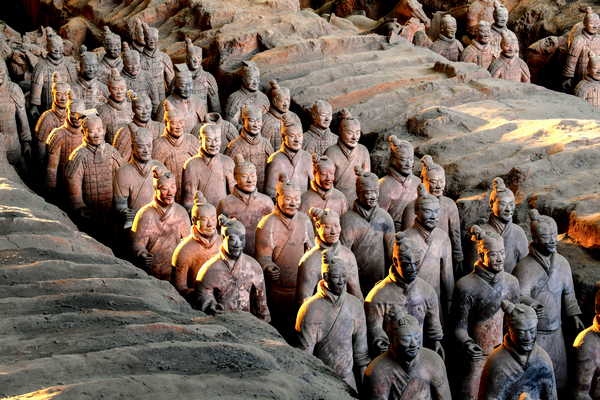
Lan Desheng picked up a sand-colored pottery shard, surveyed the fragment and fitted it into the back of a Terracotta Warrior figure.
The 52-year-old conservator-restorer is part of a specialist team piecing together and repairing the Terracotta Army, which was discovered at the Mausoleum of the First Qin Emperor in Xi'an, Shaanxi province, in March 1974.
Pointing to life-size Terracotta Warriors wearing suits of armor and with their hair in buns, Lan said: "These are pieces of history that have been vividly preserved. More than 2,000 years have slipped by, and you can still sense the huge amount of talent that went into making these figures."
Lan said the team aims to restore the relics' original appearance by applying the principle of minimum intervention.
On-site "first aid" is a key element of the work. In the tomb pits where the relics were discovered, some 15 conservator-restorers toil by day and night. Work tables are placed in the corners of the pits, on which gray-uniformed restorers arrange different sets of tools.
Wang Chunyan, a researcher at Emperor Qinshihuang's Mausoleum Site Museum, is responsible for the on-site emergency protection of the cultural relics.
One afternoon in late September, as she carried out a routine inspection of the Terracotta Army No 1 pit, Wang's attention was drawn to the head of a Terracotta Warrior. The head had undergone four months of repairs and cleaning work on it was due to be completed soon.
"There was still some dirt on the right eyebrow, which had not been fully cleaned," she said, adding that such dirt is sought by researchers to further their work.
The layer of varnish on newly unearthed Terracotta Warriors in the funerary pits warps and shrinks within minutes of them being found, due to sudden changes in temperature and humidity. The colorful artwork on the figures also quickly peels off.
Wang said, "The greatest effort we make to safeguard the Terracotta Warriors goes into protecting the varnish and colorful painting."
Menthol is used for this work. After heating it to form an organic solvent, Wang said the conservator-restorers sprinkle fusant, a type of solution obtained during this process, on fabric, which is used to daub and reinforce the excavated figures. After the solution solidifies, the relics are taken to a "recovery room".
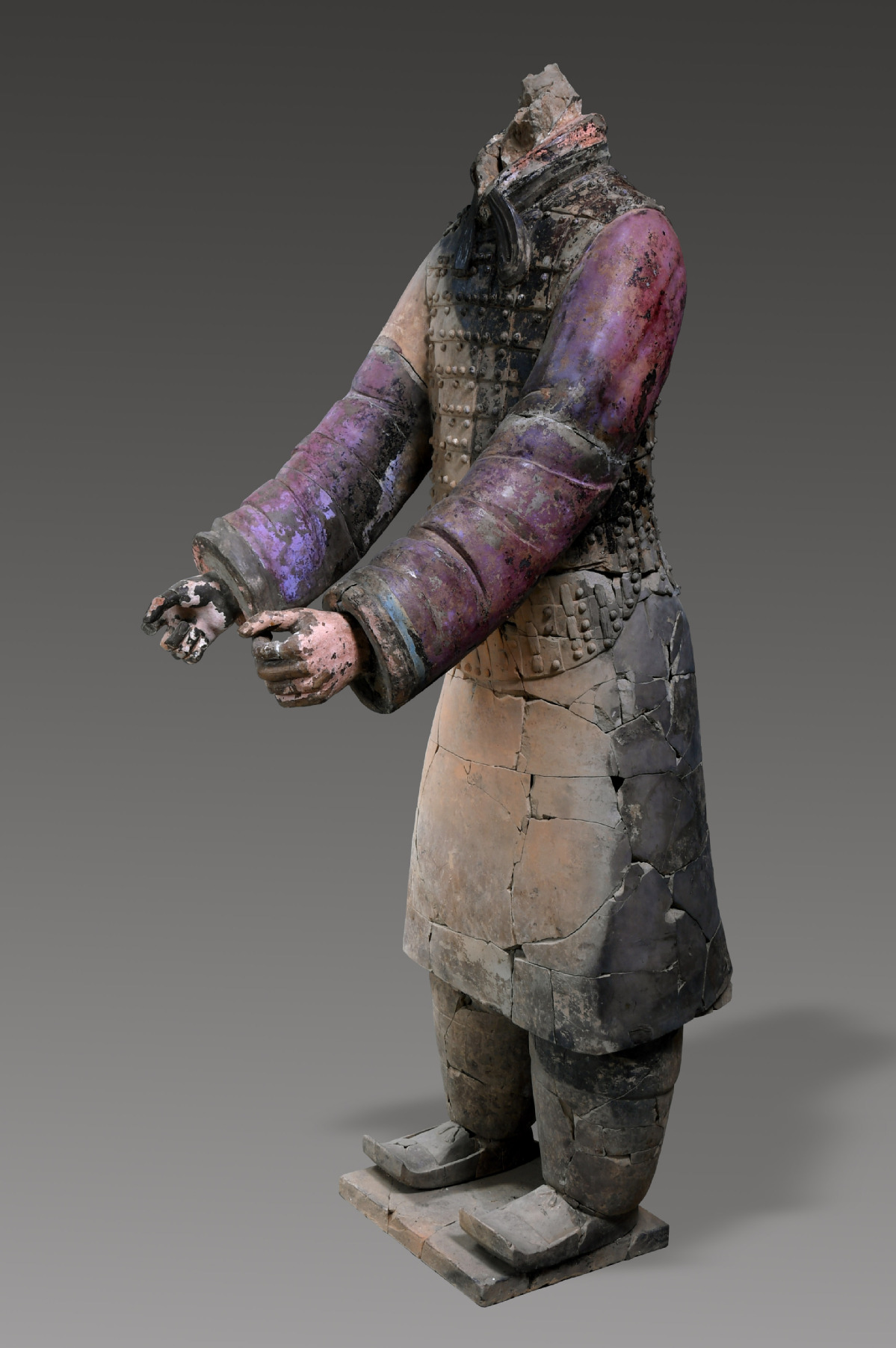
Three excavations
In 1974, the Terracotta Warriors were found by villagers in Xi'an's Lintong district.
The figures, commissioned by Emperor Qin, have undergone three archaeological excavations, with the first spanning more than six years.
The second took place in 1985 but was suddenly halted, as there were only limited ways to protect the colorful painting on the figures at the time.
The most recent excavation started in 2009, when the National Cultural Heritage Administration approved the resumption of work in a section of the No 1 pit.
Lan, the conservator-restorer, was one of those responsible for the resumption, which marked a turning point in his career.
Before this, he had only repaired one or two Terracotta Warriors every year, treating the relics with the greatest care and displaying infinite patience.
However, since the excavation resumed, he has restored pottery shards from more than 150 figures and has gradually come to know the differences between each one.
"The Terracotta Warriors feature colorful painting and even the fingerprints of the craftsmen who made them. The artisans' names are also etched on them, but they can be hard to find," Lan said.
"If you look closely at the pottery shards, you can see traces of the artisans' fingerprints and complete palm prints left after they vigorously slapped the clay. There are also traces of the hairs they shed," Lan said.
All these traces are well-preserved, he added.
Using his experience, Lan can tell precisely whether the Terracotta Warriors were made by craftsmen from the Qin Court or by local artisans, as their work is quite different.
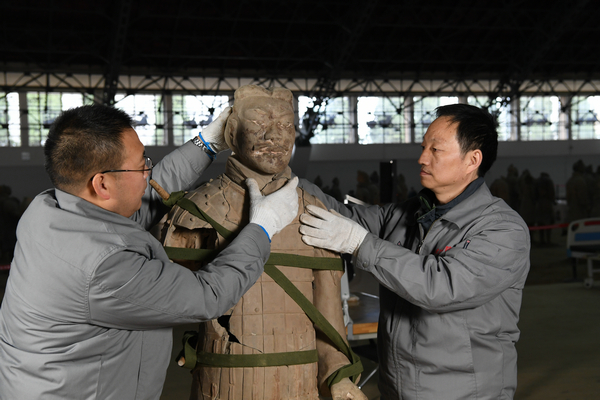
The ideal job
During the past 25 years, as a researcher with the Emperor Qinshihuang's Mausoleum Site Museum, Lan has restored more than 150 of the figures.
He mostly lives a routine life. The museum is on the eastern outskirts of Xi'an, about 50 kilometers from the downtown area, while Lan lives on the southern side of the ancient city.
At 7 am every work day, he takes a shuttle bus from his home to the museum, leaving the No 1 pit at about 5 pm for the return journey.
He said he was anxious when he first started work in this field, even though it was his ideal job.
In 1993, Lan graduated from Northwest University in Xi'an with a major in cultural heritage, and three years later, he started work on restoring Terracotta Warriors.
The conservator-restorers face a strict training program. In the first two years, Lan was not allowed to touch the relics and was told to "observe, remember and read".
His first task after his training ended was to locate fragments and search for missing parts of the figures among the piled shards.
Sometimes, he was unable to find a single missing piece, and often asked his instructor when he could start to repair a complete Terracotta Warrior. He did not have to wait long.
Now, walking along the No 2 pit, which contains figures of the warriors and their horses, Lan proudly points to them and states, "I repaired two of these pieces."
The technology used to restore the figures has changed over the years, but the fundamental methods remain the same.
After fragments of the warriors and horses are collected, the restorers attempt to piece them together before using glue to bind them.
Over the decades, the restorers have become accustomed to delays and the fact that hardly anything can be done immediately. Patience is essential.
Lan, who approaches his work with passion and excitement, set up a special operations table at the No 1 pit. Sets of repair tools, including magnifying glasses, brushes and surgical knives, are placed on the table.
Like his wife, an ophthalmologist at a major hospital in Xi'an, Lan has a special set of tools he uses to clean and repair the figures. After a period of study in Germany, he even returned home with scalpels.
"They are extremely sharp and useful for restoration work," he said. However, as he spoke, he bent one of the surgical knives.
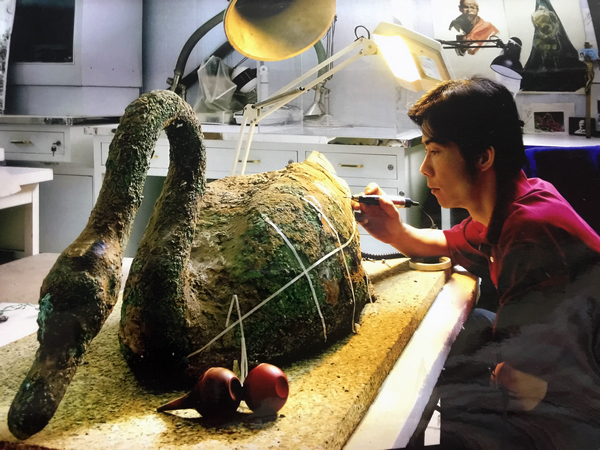
Traditional tools
Lan also has some traditional tools, which he uses frequently. About 10 years ago, he asked a carpenter in a nearby village to make him a wooden stake.
Two sticks at the top of the stake can be removed, allowing restorers to put the upper part of a warrior's body on it. The lower part of the body is later rejoined to the upper.
"Some industrial design researchers offered me a new steel stake, but for now, I prefer to use this one, as it's simple and convenient," Lan said.
He often imagines himself as a doctor diagnosing diseases during the Qin Dynasty (221-206 BC).
"There are many different types of doctors in the world, but few could have diagnosed and treated those Qin warriors, who lived over 2,000 years ago," Lan said.
Over the years, the Terracotta Warrior pits have experienced fires, collapses and flooding. Sometimes, the conservator-restorers have also been unable to restore the warriors' original appearance.
Legend has it that the troops of Xiang Yu, a warlord in the late Qin Dynasty, once opened a burial pit and removed weapons held by the figures. Many of the figures were also reportedly smashed.
"In some cases, we have been unable to locate the remaining parts of Terracotta Warriors that have been assembled for the past year or two. When this happens, there is nothing to do but stop work," Lan said.
In the No 1 pit work area, there are many half-completed figures-some with missing arms and others with smashed legs bound with rope.
"We sometimes have to stop halfway through the restoration work and wait for up to two, three or four years to find the remaining parts. However, there is always the possibility that they won't be located," Lan added.
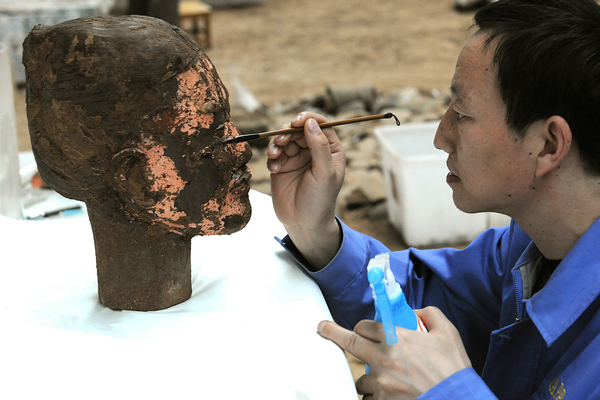
Modern concept
Ma Yu, a 48-year-old conservator-restorer, who has been in the industry 28 years, is a pioneer in restoring different types of terracotta figures during each excavation.
He gained expertise working near the Emperor Qinshihuang's Mausoleum Site Museum. During research and restoration work on figures of acrobats excavated in 1999, Ma used modern techniques to record and study the newly unearthed relics.
In 1996, he attended a two-year training course in Xi'an sponsored by the Italian government, on which he was taught by academics and researchers from Rome.
He vividly remembers an incident from this time, when a student in the class kicked a fragment, and the teacher became very angry. Since then, Ma has paid a high degree of attention to cultural relics, as his teachers always gave them the greatest respect.
"The training had a great influence on me, and gave me a better understanding of the relics. I also hope to make something myself and leave it to future generations," Ma said.
He uses modern equipment, including an ultra-depth-of-field microscope, to minutely examine each piece of pottery in the studio.
He also documents the piecing together of terracotta figures, recording their size, weight, preservation status, surface painting, patterns and excavation location carefully on spreadsheets.
New discoveries always give Ma a buzz. During restoration work, he accidentally found some high-resolution and complete fingerprints, which could provide vital clues to the figures' age, gender and athletic prowess.
"My aim is to do everything conscientiously-it's vital to restore the relics," he said.
To date, Lan has spotted the names of more than 100 craftsman etched neatly on different parts of the Terracotta Warriors.
He said, "We employ materials used in the Qin Dynasty to restore and repair the warriors and their horses-a legacy we will bequeath to the next generation.
"I hope that in the future, when more advanced technology or new restoration methods emerge, conservator-restorers can repair the relics based on the foundations we have laid and better restore them to their original state."
Jian Min contributed to this story.
--------------------Article From China Daily
Prev: Tests for Yinchuan-Xi'an high-speed railway start in NW China
Next: Thousand-year-old relics of Tang Dynasty palace unearthed in NW China
Wechat: Chinaprivatetour
24 Hours Hotline:
+86 137-3541-1378
* Authentic Experiences: Genuine local experiences that immerse you in the true essence of Xi'an and beyond.
* Safety First: Highest safety standards with secure activities and reliable transportation.
* Customizable Tours: Flexible itineraries tailored to your interests and needs.
* Local Expertise: In-depth knowledge of Xi'an and China, offering exclusive insights.
* Professional Guides: Licensed bilingual guides with over 5 years of experience.
* Comfortable Travel: Experienced drivers and well-maintained vehicles for a smooth journey.
* Sustainable Tourism: Commitment to responsible tourism and supporting local communities.
* Customer-Focused: Personalized service and continuous improvement based on your feedback.
* Free Cancellation: Cancel up to 24 hours before travel for flexibility and peace of mind.
* 24/7 Support: Round-the-clock assistance for any questions or help needed.
(Your Privacy is Protected)
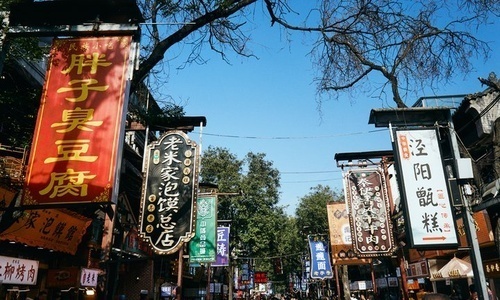 Xi'an Muslim Quarter Travel Guide: Street Food, Culture & Nightlife
Xi'an Muslim Quarter Travel Guide: Street Food, Culture & Nightlife Exploring Grand Tang Mall Xi'an: Shopping, Dining, and Entertainment in the Heart of the Ancient City
Exploring Grand Tang Mall Xi'an: Shopping, Dining, and Entertainment in the Heart of the Ancient City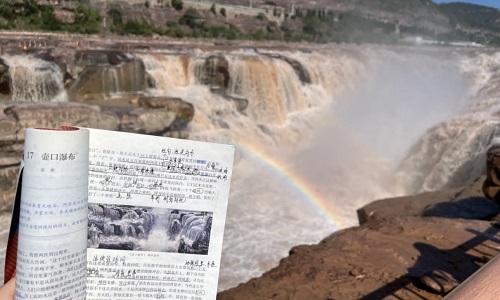 Hukou Waterfall Travel Guide: Visiting the Yellow River’s Most Spectacular Hukou Waterfall from Xi'an
Hukou Waterfall Travel Guide: Visiting the Yellow River’s Most Spectacular Hukou Waterfall from Xi'an Huashan Mountain Travel Guide: Hiking the Most Dangerous and Beautiful Peak in China
Huashan Mountain Travel Guide: Hiking the Most Dangerous and Beautiful Peak in China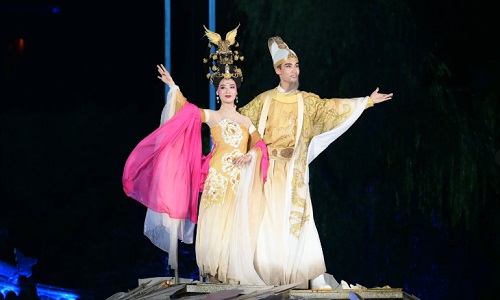 The Song of Everlasting Sorrow: A Timeless Tale of Love and Tragedy in Xi'an
The Song of Everlasting Sorrow: A Timeless Tale of Love and Tragedy in Xi'an Xi’an Qinling Wildlife Park Travel Guide: Explore the Best Zoo Experience in Xi’an
Xi’an Qinling Wildlife Park Travel Guide: Explore the Best Zoo Experience in Xi’an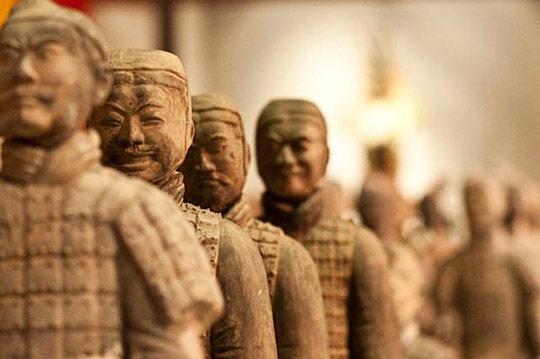 Discover the Terracotta Warriors in Xi’an: A Complete Guide to China’s Ancient Army
Discover the Terracotta Warriors in Xi’an: A Complete Guide to China’s Ancient Army 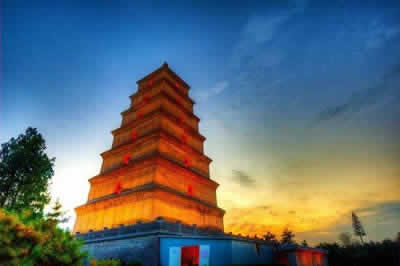 Big Wild Goose Pagoda
Big Wild Goose Pagoda1 to 1 tailor-made service from our professional travel advisors for the most sophisticated
Constantly excellent reviews for attraction, hotel and service Competitive price
Local experts provide quality tours Best selected knowledgeable local guides Authentic local restaurants
7*24 hours available to create you a worry-free tour. No Hidden Fees and absolutely no pressure to buy. Secured









Copyright © 2017 www.xianprivatetour.com All rights reserved. 浙ICP备18056007号-6